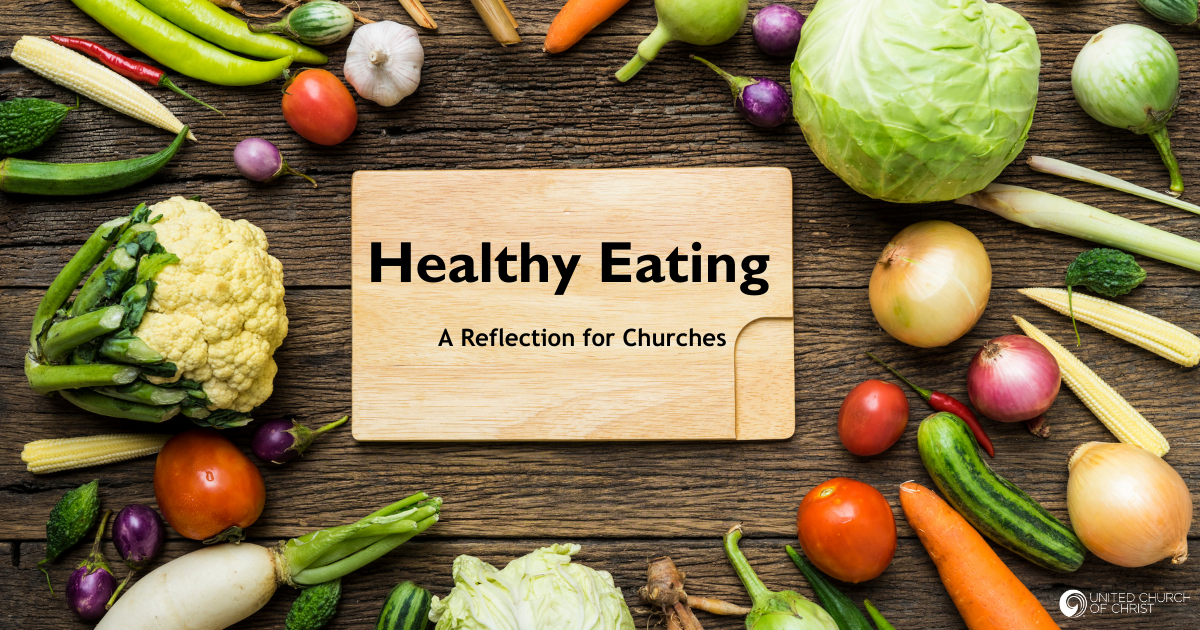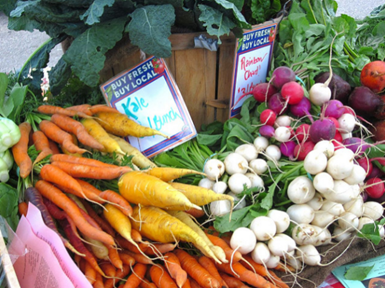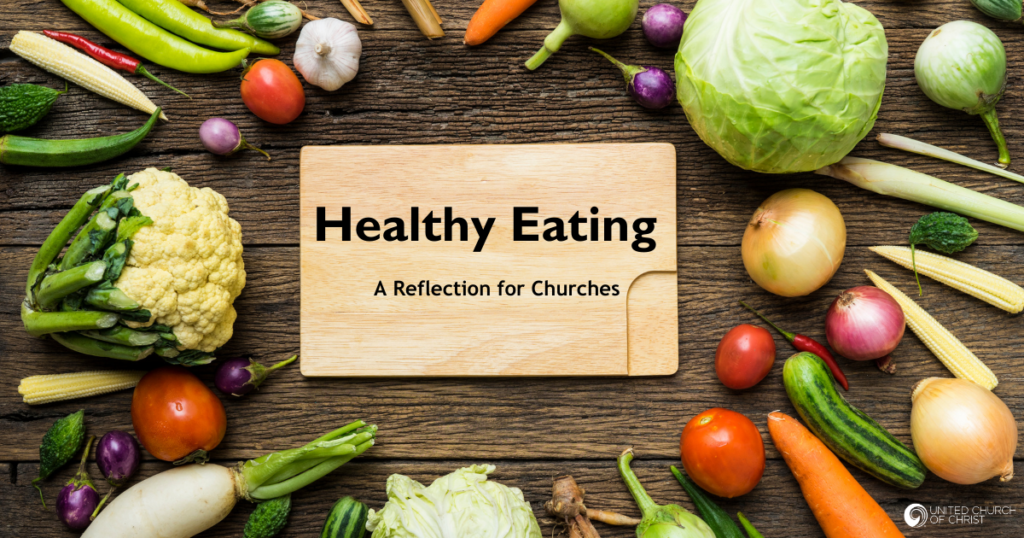Healthy Eating

The old adage, “You are what you eat,” is orthodoxy now among health food advocates, but always worth repeating to remind ourselves of how vital healthy eating is for our well-being and the well-being of the planet. It is especially important now as we witness the ravages of the current COVID-19 pandemic. Many diseases contracted by adults later in life can be attributed to poor diets when those adults were young and growing when the body’s building blocks were put in place. A strong immune system is dependent on good nutrition throughout a person’s lifespan, but especially in the early developmental stages of life. A good diet consists of eating fresh fruit and vegetables, preferably organic, and consuming less, or avoiding all together, processed foods with their high content of sugar, fat, and salt. Shopping at health food stores and farmers’ markets, or foraging the perimeter of big chain supermarkets where fresh produce is shelved are ways to access healthy food. Unfortunately, our food system is structured to make it more difficult for people from low-income neighborhoods and communities of color to access or grow healthy food. The racial and economic disparities witnessed now with COVID-19 were long in the making as a result of such pre-existing inequalities.

Connecticut Farmers’ Market (“Photo by Matt via Flickr Creative Commons” )
Healthy Food Diets
There are numerous healthy food diets available. One that is recommended is the Planetary Health Diet, which provides nutritious food and protects the environment. This diet provides the daily-recommended 2500 calories while focusing on foods that do not promote climate change, environmental pollution, and destruction of wildlife. Industrialized agriculture is one of the main culprits in polluting the environment and continuing unsustainable practices that threatens climate change. Large industrial farms use chemical pesticides and fertilizers that poison groundwater, rivers and kill insect life that is food for many birds and small animals. One simple take away regarding the Planetary Health Diet is that Americans need to eat less meat and more lentils and beans. Their website includes many recipe suggestions.
There are five steps that are crucial to promoting healthy eating habits. They are availability, affordability, education, mindfulness, and hope.
Availability
In spite of the growth in the health food industry, healthy food is still unavailable in many areas across the country. Either the corner grocery store does not stock it or the closest health food store is a bridge too far away. Farmers markets do bring healthy food into residential communities, but the demand has to be there to make such efforts profitable. Urban gardens are also ways to grow healthy food and make it available locally but then who are the urban farmers to initiate such projects? Many immigrants displaced from rural areas in their home countries came to this country with a deep knowledge of growing their own food and cooking healthy meals, and often replicated that tradition in their new country. The Italian immigrants in New Haven kept gardens of vegetables and fruit in their backyards, growing the food familiar to them; as did West Indians in cities like Toronto. However, such practices are hard to sustain across generations. First generation Americans eager to assimilate become easily seduced by advertising and peer pressure to consume what is crunchy, sweet and chewy, but not necessarily healthy. Food justice calls us to address this unequal access to nutritious food, which is either unavailable in the many so-called “food deserts” that exist in urban, suburban, and rural areas of the country.
Affordability
Specialty whole food stores can be found in many places, especially in upscale neighborhoods that can afford the higher prices of health food. While there is now more choice for healthy food, the means to afford those choices is limited. The affordability of nutritious food compared to sugar- and calorie- laden processed foods is a problem. Industrial agriculture has an economy of scale, which health food producers cannot compete against. Many households do not have the income and budget to spend the extra money on health food. Studies have shown that when family incomes shrink there is a shift to cheaper, less nutritious, and higher caloric foods. The challenge to balance good nutrition with affordability is the goal of one diet, the Thrifty Food Plan (TFP). TFP is a healthy low cost diet that relaxes some nutritional constraints. It follows the Nutrient Rich Foods (NRF) index, which is based on nine nutrients to encourage (protein, fiber, vitamin A, C and E, calcium, iron, potassium, and magnesium) and on three nutrients to limit (saturated fat, added sugar and sodium). Some basic and affordable foods that offer high concentration of nutrients include milk, yogurt, eggs, beans, potatoes, carrots, cabbage, citrus juices and fortified cereals, as well as, some canned and frozen foods.
Education
In a market economy, it is a question of demand and not just supply. Either markets are too small to justify costs or people are not demanding healthy food choices in the marketplace. Healthy eating is therefore also about education, learning what is healthy food, how to prepare it, and unlearning the bad habits of eating readily available processed foods that are overladen with fat, sugar and salt, which all contribute to poor health. Commercial food companies have created an artificial environment of ultimately poor food choices, choices that serve corporate profits first and public health second. Some consumers are educating themselves and changing their eating behavior, which does affect the marketplace. Educating consumers to demand better quality food for sale in their local groceries is an important step to eating healthy. Disseminating knowledge about affordable and nutritious diet plans such as the TFP is one way forward to healthy eating.
Mindfulness
By mindfulness, we refer to the attention given to food, where it came from, how it was made and simply permitting ourselves the pleasure in eating a tasty meal. Eating is not filling an empty tank, but savoring with gratitude that which sustains us and which many hands have helped to produce. The price paid for a head of lettuce at the grocery store obscures the story of how that head of lettuce made it to the table: where it was grown and who planted it, picked it, sorted it, packaged it, transported it, and stocked it on the grocery shelves. A Buddhist grace acknowledges this process of food production and invokes a mindfulness about healthy eating:
This food comes from labors of beings past and present.
With it our body mind is nourished, our practice sustained.
Gratefully we accept this meal.
Mindfulness also includes enjoying each bite and not rushing the meal. Finally, there is the whole dining experience, the company around the table, whether it is family, friends or strangers with whom one is sharing a meal. At the dinner table, food and friendship are shared along with real conversations so that the mind too has something to chew on!
Hope
The last step of “hope” is really the first step. Nothing can get started without it. Hope that the work can be done and that it matters. One of the obstacles in any change effort is belief, or rather not believing change is possible or what we do is right. The status quo and entrenched habits have the aura of correctness and any change is considered disruptive and even hostile. However, we must transcend such negativity with positivity! If there is one thing we are learning in this time of pandemic it is that change is possible and necessary. So why not take this opportunity to promote healthy eating habits and systems?
Healthy eating can only be one part of that future. Healthy eating has no meaning for the 18 million children in this country who go to bed hungry each night when all they yearn for is a full stomach! Before we can even begin to talk about healthy eating, we need to talk about poverty.
In this sense food justice is no different than any other justice issue that ultimately deals with poverty. The biggest constraint to healthy eating is poverty. Any program that can help lift the poor out of destitution will go towards improving their health and diet. To Cultivate for Justice is to sow the seeds of hope and change along with the seeds of healthy organic foods.
What can we do?
What can churches do? In light of the above, there are several possible projects churches can do to promote healthy eating in their congregations and communities. A church can choose from any one of the above topics to focus on: accessibility, affordability, education, mindfulness and hope. First, consider what are your church’s assets that can be utilized to promote healthy eating. Basic assets are the church building, land, and people. The building provides space for meetings and classes, the land can be converted to gardens or marketplaces, and the people can provide the work and knowledge necessary to carry out any plan. What is the hidden knowledge and expertise in the congregation? There is a mountain of knowledge and experience in any congregation that can be unlocked and directed! A church or a group of churches could hire a community organizer to help identify, plan and launch a project. Other possible suggestions are to have a potluck of healthy choices, offering less meats and sweets, and more salads and vegetable casseroles. Invite a guest speaker to address important cultivating justice issues. A potluck open to the community is a way to educate and connect with folks outside the church. Another suggestion is to plant a garden on church property and sell produce at farmers markets or give it away to food banks. A church could also help individual members to start their own gardens and help distribute its produce to food banks. In response to the last item of hope: anything a congregation can do to address socioeconomic inequality is a way to increase healthy food choices into poor communities. Affordable housing, livable wages, and even advocating for unions and collective bargaining are ways that can eventually lead to healthy eating. They all help families afford to pay for healthy food and demand it in their local stores, while also giving a way for parents not to have to work at three jobs, but have time to cook and sit down and share a meal with their children. Everything is connected! That is the wonderful news! We only have to begin somewhere, no matter how small a project or outcome, to have a positive effect that can help move the world towards God’s loving kin-dom.
Ian Skoggard is a member of the Food Justice Affinity Group for the UCC’s Council for Climate Justice.
Related News
Walking the Talk: Environmental Practices and a Commitment to Justice
St. James United Church of Christ in Hamburg, New York (a suburb of Buffalo) has been...
Read MoreThe Antidote to Power from Above
With its themes of moral reckoning and repentance, this Lenten season brings into stark relief...
Read MoreDon’t Incinerate – Innovate!
Thirty-eight years ago, the United Church of Christ's Commission for Racial Justice released a...
Read More


